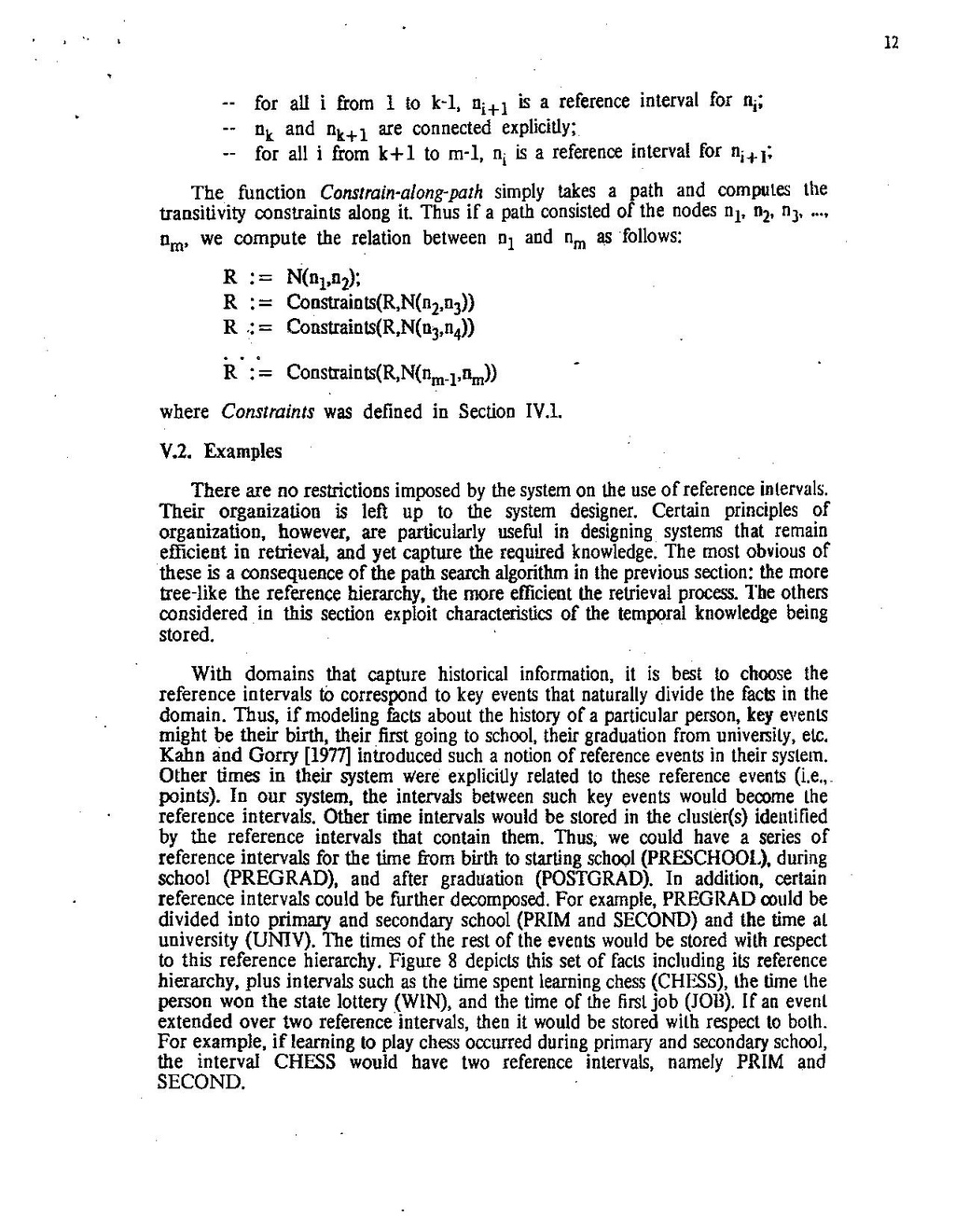for all i from 1 to k-1, ni+1 is a reference interval for ni; Dk and nk+1 are connected explicitly;.
for all i from k+1 to m-l, n; is a reference interval for ni+1; The function Constrain-along-path simply takes a path and compules the transitivity constraints along it. Thus if a path consisted of the nodes nj, 12, 13, -- Am, we compute the relation between 0; and nm as follows:
R := N(0,1); R := Constraints(R,N(n2,03)) R := Constraints(R,N(13,04))
R := Constraints(R,N(nm-1,4m))
where Constraints was defined in Section IV.1.
V.2. Examples
There are no restrictions imposed by the system on the use of reference intervals. Their organization is left up to the system designer. Certain principles of organization, however, are particularly usefUL in designing systems that remain efficient in retrieval, and yet capture the required knowledge. The most obvious of these is a consequence of the path search algorithm in the previous section: the more tree-like the reference hierarchy, the more efficient the retrieval process. The others considered in this section exploit characteristics of the temporal knowledge being stored.
With domains that capture historical information, it is best to choose the reference intervals to correspond to key events that naturally divide the facts in the domain. Thus, if modeling facts about the history of a particular person, key events might be their birth, their first going to school, their graduation from university, etc. Kahn and Gorry [1977] introduced such a notion of reference events in their system. Other times in their system were explicitly related to these reference events (i.e., points). In our system, the intervals between such key events would become the reference intervals. Other time intervals would be stored in the cluster(s) identified by the reference intervals that contain them. Thus, we could have a series of reference intervals for the time from birth to starting school (PRESCHOOL.), during school (PREGRAD), and after graduation (POSTGRAD). In addition, certain reference intervals could be further decomposed. For example, PREGRAD could be divided into primary and secondary school (PRIM and SECOND) and the time al university (UNIV). The times of the rest of the events would be stored with respect to this reference hierarchy. Figure 8 depicts this set of facts including its reference hierarchy, plus intervals such as the time spent learning chess (CHESS), the time the person won the state lottery (WIN), and the time of the first job (JOB). If an event extended over two reference intervals, then it would be stored with respect to both. For example, if learning to play chess occurred during primary and secondary school, the interval CHESS would have two reference intervals, namely PRIM and SECOND.
